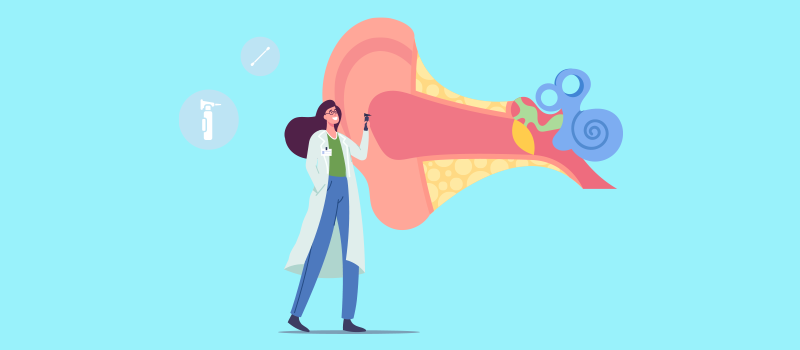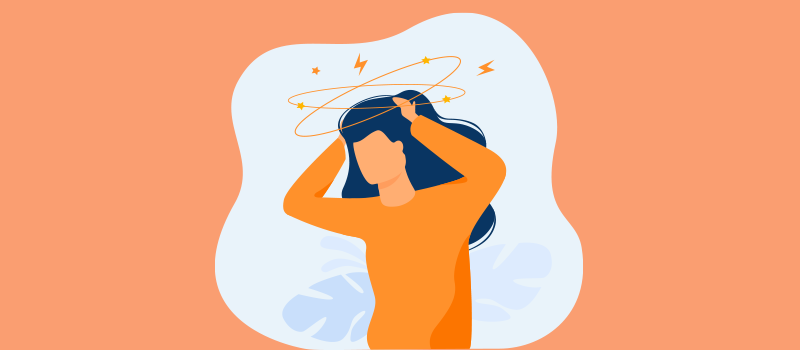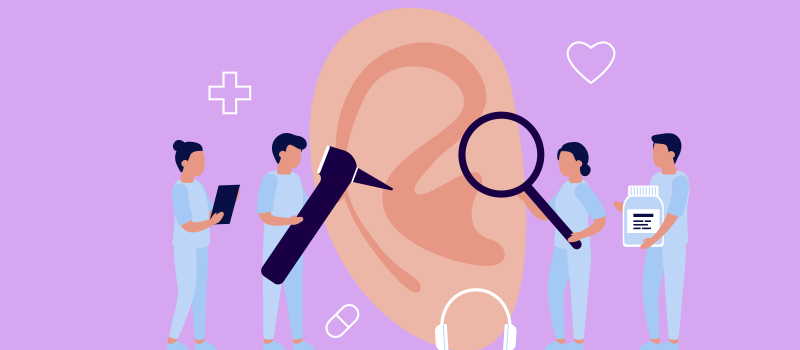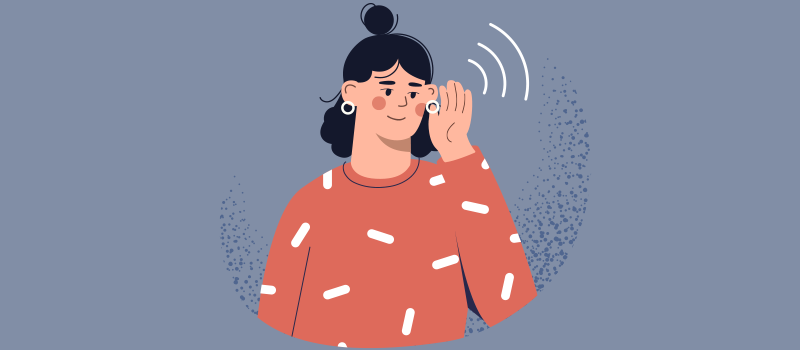What’s the Buzz
The Bee Healthy Blog
Best Practices for Safe Earwax Removal

The ears create earwax (cerumen) as a normal defense system. This wax usually washes away naturally. However, some people develop a blockage in the ear due to a buildup of ear wax. A healthcare provider can perform ear wax removal in their office quickly and safely by irrigating the ear. An otolaryngologist (ENT or ear, nose, and throat specialist) may need to be consulted to remove excessive earwax that has become obstructed or impacted. However, if you have minor earwax blockage, you can also perform ear wax removal at home. Please continue reading for some tips on how to do this safely.
What is ear wax and why is it important?
Earwax (cerumen) is a waxy substance that is present in the ear canal. Ear wax traps dirt, dead skin cells, and other debris—It is a natural cleanser and defense mechanism that also slows bacterial growth. Ear wax, therefore, helps to keep the ears clean and protected.
Doctors recommend that earwax should be left alone if it is not causing any symptoms. Removing ear wax at home can often push wax deeper into the ear and cause ear infection or damage the eardrum.
It’s worth noting that earwax usually forms in the outer part of the ear, not in the inner ear near the eardrum. If there is a buildup of wax against the eardrum, it's often due to failed removal attempts that pushed the wax deeper into the ear canal.
What problems can ear wax cause?
Sometimes, wax builds up and causes problems like hearing loss. In such cases, removing the wax can restore hearing. Other problems that can occur due to too much earwax include flaking skin, itching, ear fullness, ear pain, discharge, foul odor, and cough. You should seek medical attention if you have symptoms such as difficulty hearing, ringing in the ear, bleeding, discharge, or pressure in the ear.
Do you need to remove ear wax buildup?
Most people do not need to remove ear wax regularly. However, some people, for example, older adults, those who wear hearing aids, and people with a tendency for earwax impaction, may need to remove wax more frequently.
Your healthcare provider is the best person to evaluate and clean your ears safely with an earwax softener. However, if you have excess wax-causing symptoms, you can soften the wax and safely clean your ears at home.
What should you not put in the outer ear?
You should not put cotton swabs in the outer part of your ear. Many people tend to treat cerumen impaction at home with a cotton swab. However, cotton swabs can push the wax deep into the ear canal and worsen the impaction or cause damage, including ear infections and holes in the eardrum.
Other things that you should not put in your ear canal include toothpicks, bobby pins, car keys, or sharp objects.
Doctors do not recommend ear candling (also called ear coning or thermo-auricular therapy). It is an alternative medicine treatment that involves holding a lit candle near the ear canal to remove ear wax. This practice can result in a seriously damaged eardrum and hearing loss.
Lastly, if you have had ear or neck surgery in the past or had a hole in your eardrum, do not use over-the-counter ear wax removal or softening kits unless your ENT surgeon okays it.
How to perform safe ear wax removal?
To safely perform earwax removal at home, first, clean the outer ear with a damp washcloth. Then, put several drops of warm water, saline solution, or diluted hydrogen peroxide on a cotton ball. Place it in the outer ear. Tilt your head down such that the ear opening points up. This will pull the liquid down into the ear wax with gravity. After about 1 minute, tilt your head in the other direction to let the fluid and wax drain out. If you want, use a bulb syringe to suction it out.
The other option is to purchase over-the-counter kits such as a Debrox Earwax Removal Kit to break up and clear earwax blockage. Water-based kits contain ingredients like sodium bicarbonate, hydrogen peroxide, carbamide peroxide, and acetic acid to remove earwax. Oil-based kits contain olive oil, baby oil, almond oil, or mineral oil that softens and draws wax out. Follow the package directions to remove ear wax safely. You may need to squirt a little water and use a bulb syringe after using the solution in the kit. The procedure should not cause any pain.
Keep in mind that a DIY earwax removal kit, if not used properly, can push the wax deeper into the ear and result in an ear infection. A healthcare provider can tackle ear wax expertly. They also have better tools, such as curettes (spoon-shaped devices) designed to fit into a narrow ear canal without damaging it.
How often should I clean my ear canal?
There is no standard frequency at which you should clean your ear canal to prevent earwax buildup. As mentioned, most people only need to do something if too much wax builds up. Your healthcare provider will tell you if you need to do something to prevent or reduce earwax.
People who wear a hearing aid may need regular earwax removal. These devices can block the movement of earwax in the ear. They also stimulate more secretions in the ear canals. Plus, earwax can damage a hearing aid. Follow the manufacturer’s directions on keeping your hearing aids clean. Talk to your health professional about checking for earwax build-up if you use hearing aids.
References:
- https://www.health.harvard.edu/staying-healthy/got-an-ear-full-heres-some-advice-for-ear-wax-removal
- https://www.entnet.org/wp-content/uploads/2021/04/Cerumen_Dos-Donts_CoBranded-v2.pdf
- https://www.entnet.org/wp-content/uploads/2021/04/Cerumen_FAQ_CoBranded-v2.pdf
- https://www.ncbi.nlm.nih.gov/pmc/articles/PMC6492540/







SOCIAL